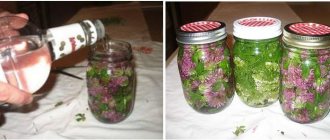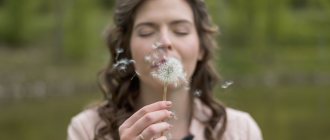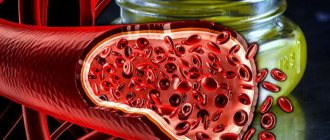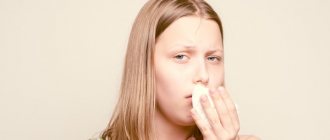09.09.2021 Nail and skin fungus is a common problem. It is enough to swim in a pool, take a shared shower or visit a bathhouse to become infected with this disease. Diseased nails become yellow-gray and brittle, and noticeably thicken. The disease not only spoils the appearance, but also causes severe physical discomfort: itching and burning of the affected areas of the skin.
If the fungus is not treated, then soon its pathogen will spread throughout the body. The spores will enter the bloodstream, leading to allergic reactions. It is recommended to start treatment in the early stages and not stop therapy until all symptoms have passed.
Modern pharmacology offers many options for anti-fungal drugs in various dosage forms. The choice of remedy depends on the type of fungus, the degree of the disease and the individual reactions of the body.
Classification of fungi
The following types of fungus are distinguished, depending on the distribution of the process:
- Keratomycosis. The process of spore dissemination occurs in the epidermis;
- Dermatomycosis. Affects skin, hair and the top layer of nail plates;
- Candidiasis. Another name for the fungus is “thrush”. It usually affects the mucous membranes.
With systemic mycoses, not only the skin is infected, but also internal organs.
By origin, fungi are:
- yeast;
- moldy;
- dimorphic.
Only yeast are a natural component of the human microflora. The rest are classified as pathogenic agents.
Signs and symptoms of disease of the nail plate and the skin around it
The initial stages of nail fungus do not always begin to appear directly on the nail plate. Often the pathology manifests itself:
- excessive dryness of the skin of the hands;
- itching;
- presence of cracks;
- redness or inflammation.
Signs of fungal infection may also
- bubble formations between the fingers;
- discomfort and burning sensation in the nail plate area;
- redness of the nail fold;
- the presence of pus in the wounds between the fingers.
Important . The first symptoms are often mistaken for allergic reactions. Meanwhile, the infection spreads further and quickly affects the nails.
The nail plate changes color and turns from pink to cloudy and dull. Yellow or white spots appear along the edges or at the base, which quickly spread over the surface of the nail.
All symptoms of fungus depend on the specific type of pathogen, so before starting treatment, you need to know the form of mycosis.
Signs of mycosis on the nails appear:
- the appearance of spots, grooves and stripes on the nails;
- sharp thickening of the structure;
- color change;
- unnatural convexity or retraction of the nail plate into the bed;
- partial or complete detachment of the nail plate;
- brittleness and looseness of nails.
Types of drugs for fungus
Before choosing a suitable remedy, you need to pay attention to the main types of drugs for mycoses:
- Products for topical use. This category includes varnishes, ointments, gels and solutions. They help well in the initial stages of the development of the disease;
- Tablets and capsules. They are used internally, according to the purpose and instructions. They are necessary if the disease is advanced and local remedies are no longer suitable.
To achieve an optimal result, it is necessary to undergo diagnostics and identify the pathogen. In this case, the therapy will bring the desired effect.
What the disease looks like: stages and types of fungal nail diseases on the fingers with photos
Primary infection with fingernail fungus occurs almost asymptomatically . It is impossible to understand that spores have got under the nail without visible changes. And with a serious infection, symptoms appear that immediately become noticeable.
Shine
A healthy nail plate normally shines even in the absence of varnish. During polishing, the shine increases even more and is not lost upon contact with water or detergents. Lack of shine is the first sign of the presence of fungus. The surface becomes cloudy and matte.
Form
A healthy nail grows evenly, and the free edge moves down slightly.
In the presence of a fungal infection, the growth of the plates is disrupted. The nail looks crooked because one edge grows faster than the other.
Sometimes the free edge may rise up.
Surface
Healthy nails have an even and smooth surface . When furrows, depressions or bumps appear, you should think about the presence of onychomycosis.
Color
The soft pink and clear color of the nail bed quickly begins to change when athlete's foot is present. The plate becomes yellow over its entire surface. Sometimes streaks, white spots and spots may appear.
Important . The color of the spots can be green, black or brown. This indicates the presence of mold microorganisms.
The initial stage of the fungus is considered to be the moment when color changes have affected no more than 1/3 of the surface of the nail.
List of drugs
When choosing drugs for fungus, it is necessary to focus on effectiveness, the presence of side effects, symptoms and course of the disease. It is important to take into account individual intolerance to the components.
Antifungal antibiotics
If the fungal infection is systemic in nature, an integrated approach is required. Deep tissue damage, separation of the nail plates and severe itching of the skin against the background of deteriorating general health suggest the use of not only local remedies, but also tablets.
Among external remedies, it is worth highlighting medications that contain naftifine. This component has an antibacterial and anti-inflammatory effect. When taken regularly and in combination with other therapeutic agents, recovery occurs quickly.
Preparations with naftifine:
| Exostat solution 1% 15ml |
| Mycoderil cream 1% 15g |
| Exoderil cream 1% 15g |
External preparations for dermatomycosis and keratomycosis
Yeast, mold and dimorphic fungi can be cured with Terbinafine-based products. Popular drugs with this active ingredient:
| Lamicide drops for nails 15ml |
| Lamicide spray for legs 15ml |
| Lamisil cream 1% 15g |
| Fungoterbin 1% 15g |
| Exifin gel 1% 15g |
| Terbizil cream 15g |
| Terbix cream 1% 10g |
| Exiter cream 1% 15g |
Medicines containing ketoconazole effectively fight fungal infections of the head and groin area. List of drugs:
| Shampoo Sulsen forte 250ml ketoconazole |
| Shampoo Sulsen mite for dandruff 1% 250ml |
| Sulsen forte paste 2% 75g ketoconazole |
| Sulsen mite paste 1% 75g |
| Shampoo Sulsen mite for dandruff 1% 150ml |
| Shampoo Sulsen forte from perch 150ml |
| Nizoral cream 2% 15g |
| Mycozoral ointment 2% 15g |
| Sebozol shampoo 100ml |
Products based on miconazole, a synthetic substance with an antifungal effect, are effective against dermatomycetes and yeast, as well as the causative agent of lichen versicolor. Preparations containing miconazole:
| Mykozon cream 2% 15g |
| Ginocaps vag caps x 10 |
Antifungal agents for systemic candidiasis
The Candida fungus spreads inside the body: on the respiratory system, in the digestive system, on the genitals. Sometimes it infects the nervous and cardiovascular systems.
Often, with systemic candidiasis, the fungus also affects external tissues - nail plates, skin on the legs and arms. To get rid of the disease, it is important to start therapy in a timely manner. To treat candidiasis, drugs containing clotrimazole are used.
Popular remedies for the treatment of mycotic diseases caused by the Candida fungus:
| Flucorem 0.5% gel 15g |
| Kanizon plus cream 15g |
| Kanizon cream 1% 20g |
| Candide cream 15g |
| Clotrimazole-Akrikhin ointment 1% 20g |
| Clotrimazole-Akos ointment 1% 20g |
| Candide B cream 15g |
| Candiderm cream 15g |
Sources and provocateurs of infection
It would seem that all people know how important it is to adhere to the rules of hygiene and safety in public places. But until now, swimming pools and saunas are considered the most important source of fungus. Fungus on the feet can cause disease on the hands. Having a disease in your loved ones can cause problems for you too.
Important . The fungus is transmitted through towels, bed linen and indoor shoes.
Also, all the patient’s personal belongings can become a source of fungi:
- shoes;
- manicure accessories and combs;
- blankets and pillows;
- cloth.
Provokes the development of mycosis:
- humid and warm environment;
- blows and bruises;
- vascular pathologies;
- constant stress and emotional tension;
- violation of hygiene rules;
- diabetes;
- long-term use of oral contraceptives or antibiotics;
- the presence of artificial coating on the nails;
- poor nutrition;
- large amounts of sugar in the diet;
- old age.
How to choose drugs for fungus
To combat mild fungal infections, topical preparations—varnishes, ointments, sprays, shampoos, and special solutions—are sufficient. For advanced diseases, both local and systemic agents are used. Anti-fungal tablets serve as a supplement, ridding the subungual skin and other tissues of the pathogen. In the “Antifungal Drugs” section on our website you will find the medications listed in this article, as well as their analogues.
Any drugs for fungus should be selected with the help of a specialist who can determine the severity of the disease and take into account the individual characteristics of the body.
The offer is not an offer, the drugs presented are medicines, specialist consultation is required.
Table of contents
- Etiology and pathogenesis
- Clinical manifestations
- Principles of treatment
Onychomycosis (fingernail fungus, toenail fungus) is a fungal infection of the toenails or fingernails that affects any component of the nail complex, including the base, bed or plate. The disease can be accompanied by pain, discomfort, and changes in the appearance of the nails, which in some cases leads to serious physical and professional limitations, anxiety for patients and a decrease in their quality of life.
In our company you can purchase the following equipment for the treatment of onychomycosis:
- AcuPulse (Lumenis)
In the USA, onychomycosis of the nails occurs in approximately 2–13% of the population, in Canada - in 6.5%, in England, Spain and Finland - in 3-8%. According to a systematic review of 1914 articles, the prevalence of onychomycosis is as follows:
- general population - 3.22%;
- children - 0.14%;
- elderly people - 10.28%;
- patients with diabetes mellitus - 8.75%;
- patients with psoriasis - 10.22%;
- HIV-positive patients - 10.40%;
- patients on dialysis - 11.93%;
- after kidney transplant - 5.17%.
Onychomycosis accounts for about half of all nail pathologies and is the most common nail disease in adults. As for the affected areas, statistically, the legs are affected much more often than the arms.
The main forms of onychomycosis are:
- Distal lateral subungual onychomycosis
- Proximal subungual onychomycosis
- White superficial onychomycosis
- Endonyx-onychomycosis
- Candidal onychomycosis
Often patients have a combination of these subtypes, or total dystrophic onychomycosis - damage to the entire nail complex.
Prevention
To minimize the risk of contracting mycosis, you must follow some rules:
- Practice good hygiene and wash your hands frequently.
- Use your own towel and manicure accessories.
- Strengthen immunity.
- Do not use false nails or apply acrylic nails.
- Treat your nails with iodine or hydrogen peroxide.
- Dry skin thoroughly.
Compliance with all doctor’s instructions and regular use of medications will allow you to completely cure fingernail fungus within 6–12 months. Pathology is treated faster on the hands, since they are open and do not have such a humid and warm environment as the feet.
Soda paste
To form a thick mixture, you need to dilute the required amount of soda with water. Then mix it all thoroughly until a homogeneous mass is formed. This paste should be applied in an equal layer to the nail, then drop a few drops of lemon juice on top of the soda.
As a result, it will pinch a little and characteristic bubbles will form. After 5 minutes, the paste should be removed by washing your feet with warm water and soap. When treating nail fungus with soda, you must use antifungal ointments.
Birch tar
You need to treat your nails with tar after steaming baths. This should be done 2 times weekly. A drop of pharmaceutical birch tar should be placed on the dry surface of each plate. Wait until the product dries, put on cotton socks and do not wet your feet for two days. Then repeat the procedure until improvement occurs.
You can also prepare an ointment. For one part of tar, take 4 parts of interior fat or baby cream, mix everything and apply it to your nails every day before bed. The fingers are wrapped in polyethylene, the bandage is secured, and socks are put on. In the morning, you can wash your feet with warm water and laundry soap.
You can also use tar soap, but there is not enough tar there, only 10%.
What to do at the first signs?
If a person suspects the presence of a fungus, the first thing to do is consult a dermatologist. Diagnostic measures will play a decisive role in therapy. The doctor must determine not only the fact of infection itself, but also determine the type of pathogen. Only on the basis of these data it is necessary to select medications so that they produce a positive effect and suppress the vital activity of specific types of fungi.
The diagnostic examination consists of two stages:
- initial visual inspection;
- taking a microscopic examination and inoculating fungi into cultures.
It is the second method that makes it possible to accurately determine the type of pathogen.
Tea tree oil
Choose quality essential oil. It doesn't have to be cheap. Only 100% oil will help. Usually there is a 10 ml bottle on sale. This amount will be enough for a whole year and there will be some left over.
Every night, use the pipette built into the bottle to place a drop on each nail. The liquid envelops the entire nail plate, the area around the nail and even the spaces between the fingers.
Dry your fingers in the open air. Wrap with gauze and put on cotton socks.







